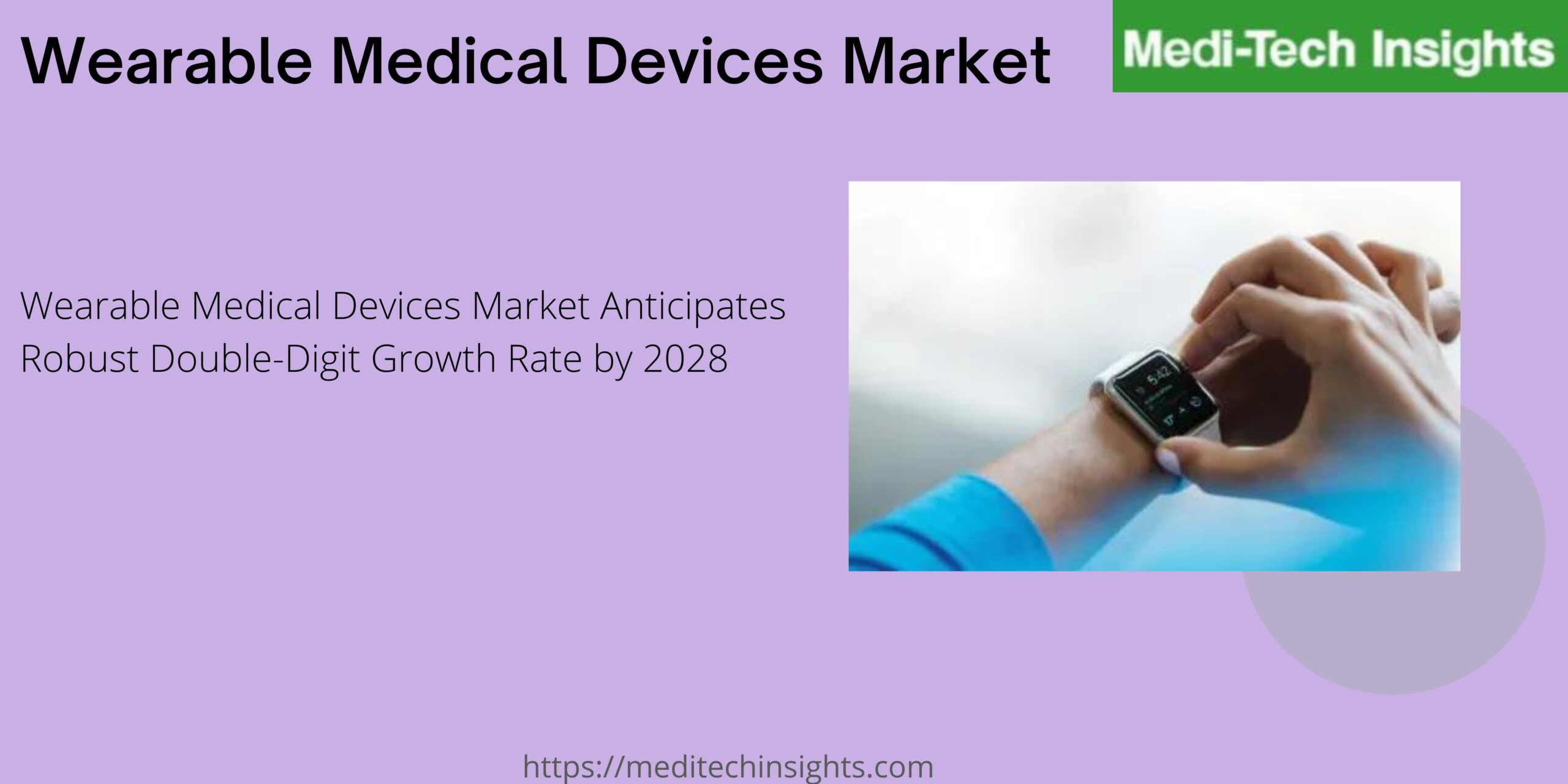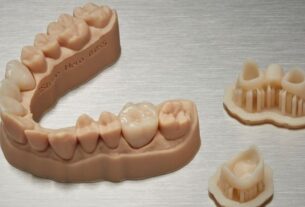Growing awareness of fitness, lifestyle, and home healthcare trends; increased use of wearable medical devices since COVID-19; and improvements in wearable technology are the main drivers propelling the market. Please submit a brief question for a sample report to find out more about the research.
Wearables, often known as wearable medical devices, are a class of sophisticated electronic devices designed to monitor and improve an individual’s health. Wearables collect and analyze health data using a combination of hardware, software, and mobile applications before sending it to the cloud for additional analysis. The following are some examples of modern wearable medical devices:
- Smartwatches:As a result of rapid technological advancement, smartwatches have emerged as the dominating category of wearable medical devices. Modern smartwatches, which were not originally intended for healthcare, now measure a variety of health parameters such as steps, calories, oxygen levels, and EKG data.
- Advanced Care & Alert Portable Telemedical Monitor (AMON):The Advanced Care & Alert Portable Telemedical Monitor (AMON) is a popular wearable medical gadget that is often used in medical settings. Using this equipment, nurses at doctor’s offices effectively acquire important information such as pulse and oxygen levels.
- Continuous glucose monitoring (CGM) is a significant advancement in diabetes management. CGM technology consists of a wearable sensor that measures glucose levels autonomously throughout the day, removing the need for patient intervention.
COVID-19 boosted the adoption of wearable medical devices market
The impact of the Covid-19 epidemic on the market has been overwhelmingly beneficial, with diagnostic gadget makers witnessing significant revenue increases. This increase is linked to rising demand for wearable medical devices, notably for population self-monitoring of Covid-19 symptoms. Garmin Ltd., for example, had an amazing 11.4% gain in sales for fiscal year 2020, with its fitness business reporting a significant 25.8% increase during this period. The COVID-19 epidemic has increased the importance of wearable medical devices in the healthcare industry, spurring the entry of new firms who are developing revolutionary wearables capable of detecting early warning signals of viral infections. For example, Xiaomi Corporation released a unique wearable, the Mi Smart Band 6, in March 2021. The latest iteration incorporates an added functionality for SpO2 measurement, designed to monitor symptoms associated with Covid-19.
Despite the fact that Covid-19 occurrences are expected to decline after 2021, worldwide healthcare systems have encountered considerable issues owing to other illnesses. This has led to an increase in the use of wearable medical devices and associated items for the early detection of certain illnesses and disorders. Fitness trackers and smartwatches with sensors to measure a user’s physical activity and heart rate have shown great demand worldwide and are projected to continue over the projection period.
“Rising demand for wearable medical devices post Covid-19 is driven by increased awareness for fitness & healthy lifestyle, early diagnosis of diseases, and growing adoption of artificial intelligence. Industry challenges include regulatory approvals, device reliability, safety, and seamless battery integration” – Vice President, Technology and Customer Solutions, Leading Manufacturer
Growing Demand for Wearable Health Devices Amidst Rising Chronic Conditions is boosting the Wearable Medical Devices Market
The increased global incidence of chronic illnesses such as diabetes and neurological disorders is driving the wearable medical device industry. Sedentary lifestyles increase mortality and raise the risk of illnesses such as diabetes and hypertension. Diabetes rates have risen significantly, with a 3% increase in mortality rates between 2000 and 2019, resulting in about 2 million deaths globally in 2019 when paired with renal illnesses.
Furthermore, according to WHO, CVD accounts for 32% of all fatalities worldwide, resulting in 17.9 million deaths per year. According to the European Heart Network, CVDs cause over 3.9 million deaths in the European area each year, with over 1.8 million fatalities occurring in the European Union (EU). Sedentism, poor nutrition, tobacco use, excessive alcohol intake, and physical inactivity are also risk factors for heart disease and stroke. These variables also increase blood pressure and blood sugar levels, as well as create overweight and obesity in patients, adding to the total CVD burden. In the approaching years, these patterns predict an increase in demand for wearable medical equipment, offering consumers the ability to monitor vital parameters such as blood sugar levels and blood pressure.
Wearable Medical Devices Market – Competitive Landscape
Some of the key players operating in the market include Xiaomi Technology Co.; Fitbit, Inc.; Philips Electronics (acquired Biotelemetry, Inc.); Garmin Corporation; Apple, Inc.; Huawei Technologies Co. Ltd.; Polar Electro; OMRON Corporation; Sotera Wireless; Intelesens Ltd.; among others
Organic and Inorganic Growth Strategies Adopted by Players to Establish Their Foothold in the Wearable Medical Devices Market
To get a larger market share, players in this market are implementing organic and inorganic development methods such as releasing new products, forming related alliances, and forming mergers and collaborations. As an example,
- In June 2023, Googledeclared the launch of the June 2023 Feature Drop, which brought with it upgrades for Fitbit, Pixel Watch, and Pixel phones. Fitbit devices now include activity modes and a daily fitness score to help users better determine when their bodies need to relax or exercise.
- In May 2023, EOFlow Co. Ltd., a business that manufactures EOPatch devices intended for insulin administration, was bought by Medtronic, who announced the acquisition of Covidien in 2015. Because of its revolutionary design and complete disposable nature, this wearable allows Medtronic to better meet the needs of people with diabetes.
- In April 2023, Audereintroduced HealthPulse TestNow, marking the debut of the initial COVID-19 application in South Africa. This app assists individuals in self-testing by providing guidance on the execution and interpretation of Rapid Diagnostic Tests (RDTs)
- In January 2023, Masimo and Royal Philipsbroadened their collaboration to harness the capabilities of the Masimo W1 advanced health tracking watch, aiming to enhance patient monitoring in home telehealth. The W1 watch from Masimo integrated with Philips’s patient monitoring ecosystem to advance telehealth and telemonitoring functionalities
The market for wearable medical devices is anticipated to grow in the upcoming years as a result of the significant number of innovators in the industry, the broad adoption of 5G and artificial intelligence, technological advancements in wearable medical devices, and the players’ aggressive use of both organic and inorganic growth strategies.
Get Detailed Insights on the Wearable Medical Devices Market @ https://meditechinsights.com/wearable-medical-devices-market/
About Medi-Tech Insights
Medi-Tech Insights is a healthcare-focused business research & insights firm. Our clients include Fortune 500 companies, blue-chip investors & hyper-growth start-ups. We have successfully completed 100+ projects in Digital Health, Healthcare IT, Medical Technology, Medical Devices & Pharma Services.
Contact:
Ruta Halde
Associate, Medi-Tech Insights
+32 498 86 80 79


